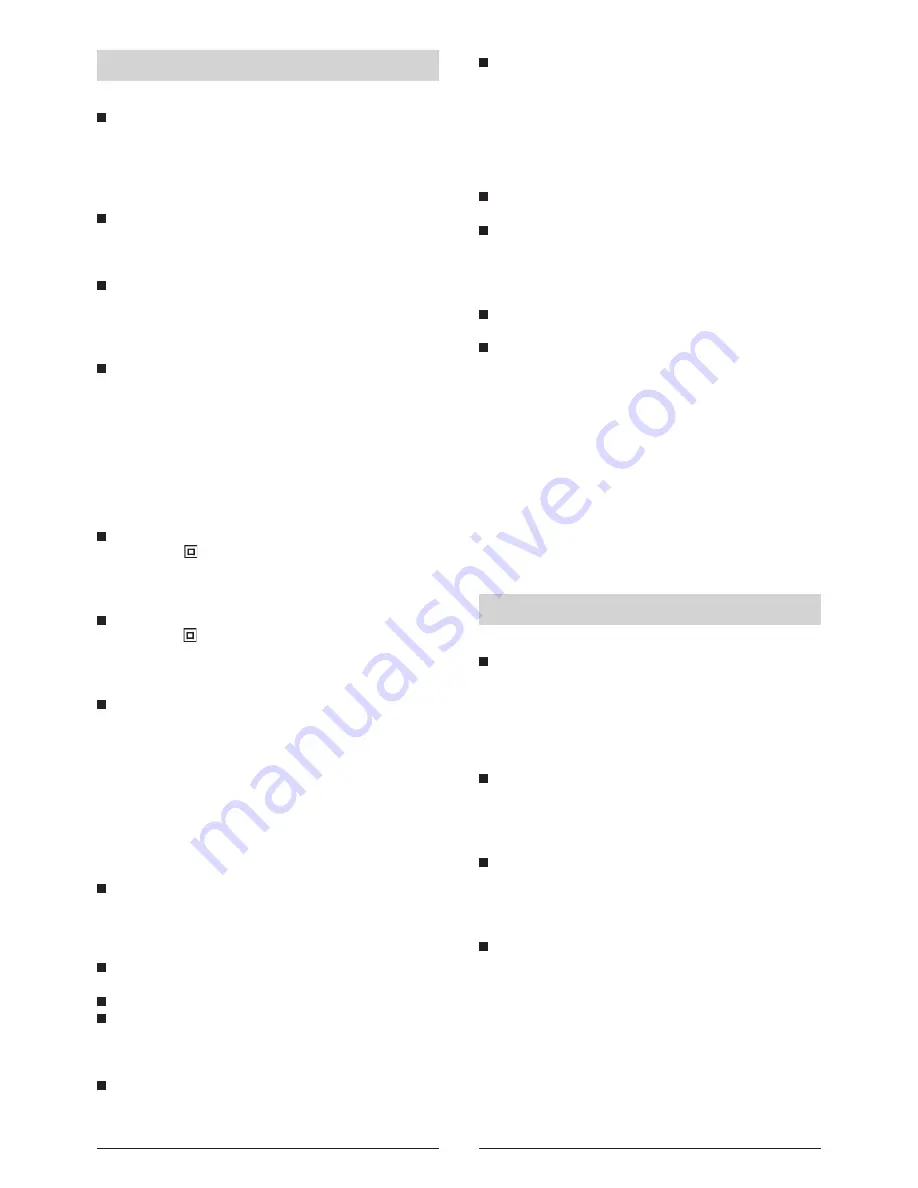
2
ENGLISH (EN)
WARNING
The minimum distance between the hob surface
on which the pans stand and the lower part of the
hood must be 65 cm, unless otherwise specified in
the installation instructions. If the hob installation
instructions specify a greater distance, it must be
taken into account.
The air collected must not be conveyed into a duct
used to blow off smokes from appliances fed with an
energy other than electricity (central heating systems,
thermosiphons, water-heaters, etc.).
Comply with the official instructions provided by the
competent authorities in merit when installing the
disposal duct. In addition, exhaust air should not
be discharged into a wall cavity, unless the cavity is
designed for that purpose.
The room must be well aerated in case a hood and
some other heat equipment fed with an energy other
than electricity (gas, oil, coal heaters, etc) operate
at the same time.
In fact the intake hood, disposing of air, could create a
vacuum in the room. The vacuum should not exceed
0,04mbar. This prevents the gas exhausted by the
heat source from being intaken again. It is therefore
advisable to ensure the room contains air taps able
to ensure a steady flow of fresh air.
Check the data label inside the appliance; if the
symbol ( ) is printed, read the following: this
appliance has such technical particulars that it
belongs to class II insulation, therefore it must
not be earthed.
Check the data label inside the appliance; if the
symbol ( ) is NOT printed, read the following:
ATTENTION: This appliance must be earthed.
When making the electrical connections, check
that the current socket has a ground connection.
When making the electrical connections, check that
the voltage values correspond to those indicated
on the data plate inside the appliance itself. In case
your appliance is not furnished with a non separating
flexible cable and has no plug, or has not got any
other device ensuring omnipolar disconnection from
the electricity main, with a contact opening distance
of at least 3 mm, such separating device ensuring
disconnection from the main must be included in the
fixed installation. If your unit features a power lead
and plug, position this so the plug is accessible.
Always switch off the electricity supply before carrying
out any cleaning or servicing operations on the
appliance.
USE
Avoid using materials which could cause spurts of
flame (flambées) near the appliance.
Do not flambé under the range hood
When frying, take particular care to prevent oil
and grease from catching fire. Already used oil is
especially dangerous in this respect. Do not use
uncovered electric grates.
To avoid possible risks of fire always comply with
the indicated instructions when cleaning anti-grease
filters and when removing grease deposits from the
appliance.
This appliance is not intended for use by persons
(including children) with reduced physical, sensory
or mental capabilities, or lack of experience and
knowledge, unless they have been given supervision
or instruction concerning use of the appliance by a
person responsible for their safety. Children should
be supervised to ensure that they do not play with
the appliance.
Caution: accessible parts may become hot when
used with cooking appliances.
This kitchen hood is intended for installation in do-
mestic kitchens above cooktops, cooking devices
and similar kitchen equipment.
MAINTENANCE
Thorough servicing guarantees correct and long-
lasting operation.
Any fat deposits should be removed from the ap-
pliance periodically depending on amount of use
(at least every 2 months). Avoid using abrasive or
corrosive products. To clean painted appliances on
the outside, use a cloth dipped in lukewarm water
and neutral detergent.
To clean steel, copper or brass appliances on the
outside, it is always best to use specific products,
following the instructions on the products themselves.
To clean the inside of the appliance, use a cloth (or
brush) dipped in denatured ethyl alcohol.
FRANCAIS (FR)
ATTENTION
La distance minimum entre la surface de support
des casseroles sur le plan de cuisson et la partie
inférieure de la hotte doit mesurer 65 cm, sauf si
les instructions pour l’installation sont différentes. Si
les instructions pour l’installation du plan de cuisson
indiquent une distance supérieure, cette dernière doit
être respectée.
L’air aspiré ne doit pas être canalisé dans un conduit
qui est utilisé pour évacuer les fumées produites par
des appareils alimentés par des sources d’énergies
autres que l’énergie électrique (installations de
chauffage central, radiateurs, chauffe-eau, etc.).
Pour évacuer l’air qui doit être éliminé respectez les
prescriptions des autorités compétentes. De plus
l’air qui doit être évacué ne doit pas être déchargé
dans une cavité du mur, à moins que cette cavité
soit prévue pour ce but.
Prévoyez une aération de la pièce adéquate quand
une hotte et des appareils alimentés par une énergie
autre que l’énergie électrique (poêle à gaz, à huile,
à charbon etc.) sont utilisés en même temps. En
effet, en évacuant l’air, la hotte pourrait créer une
dépression dans la pièce. La pression négative de
la pièce ne doit pas dépasser 0,04mbar, évitant ainsi
que la source de chaleur provoque un appel des
gaz qui doivent être évacués. Il est donc nécessaire






























